Media | Articles
Prices Are Widening Between the Best-Condition Cars and the Rest. Why?
Dave Kinney, appraiser and publisher of the Hagerty Price Guide is back to answer select questions from readers. While Dave can’t put a value on an individual car in this column (that’s what people pay him to do in his appraisal business, after all), he can field questions about the appraisal process, how to go about buying and selling classics, and the industry as a whole. Have a question of your own for a future article? Ask in the comments section.
The best costs more. It always has, sure. But now, as the best appreciates, the rest aren’t keeping pace.
We’ve all seen this scenario play out at auction, both online and in person. Two very similar cars, same year/make/model with similar mileage, come up for sale at the same auction. One brings a high bid of, say, $55,000 and sells. The second car sells for $21,000. Then we scratch our heads.

Yes, details can make a big difference in auction prices. Colors, time of day on the auction block, celebrity provenance, “barn find mystique, and even possible regional differences can have an affect. But above all those, the number one differentiator in price among cars over 15 years old is typically the most straightforward one: condition (In newer cars, often mileage beats out simple condition, but that’s a topic for another day).
A quick review: the Hagerty Price Guide breaks down condition into four numerical ratings. At the top are #1 (“concours,” or “best-in-the-world”) and #2 (“excellent”) condition. Most collector cars are in #3 (“good”) condition, and don’t forget there are plenty in #4 (“fair”) condition or lower. There are very few true #1 cars in the marketplace, possibly one in 500. Cars in true #2 condition might be 30 or 40 in 500—still rare, but a bit easier to find.
Marketplace
Buy and sell classics with confidence
There have always been sizable differences in value based on condition, but in recent years our data shows that as the best of the best (#1 and #2) cars are bringing increasingly higher prices, the #3 and #4 condition cars are appreciating at a slower rate, meaning good quality drivers are comparatively more affordable. John Wiley, Manager of Valuation Analytics at Hagerty, recently reported that “as for diverging condition values over the past five years, the Hagerty Price Guide’s average increase in condition #1 value is 32.4 percent; for condition #2 it is 33.8 percent; for condition #3 it is 29.4 percent; for condition #4 it is 23.4 percent.”

That’s nearly a 10 percent difference in the rate of appreciation between condition #1 and #4 vehicles. Ten years ago, over the five years from 2009 to 2014, the spread in the average increase in condition #1 to #4 values was just seven percent. Three percent might not sound like much, but remember—that’s across the entire collector market.
Dig into the details and you begin to see some distinctions. For example, the appreciation gap in #1 to #4 conditions over the past five years for 1965-73 Ford Mustangs is just 2.9 percent (26.2 percent for #1 cars vs. 23.3 percent for #4 cars). But for the 1979-93 Fox-body Ford Mustang, the gap is vastly higher at 55.2 percent (+191 percent for #1 vs. 135.8 percent for #4). The original Mustang is a mature collector car, while the Fox-body is just getting its legs.

For the 1968-74 Ferrari Dino 246, the gap is 18.4 percent (49 percent for #1 vs. 30.6 percent for #4), while for a modern-ish collector car like the 1978-95 Porsche 928, the gap is 40.3 percent (75.3 percent for #1 vs. 35 percent for #4).
So, among these hot collector cars, why are the best of the best appreciating at a faster clip than the ones with wear and tear? First and foremost is the culture of buyers in 2024. Two or three decades ago, buying “good enough” was just fine. Finding a car with “okay” chrome, an aging but serviceable interior, or weak paint was a perfectly acceptable option for many buyers. Especially if saving some money when purchasing was the goal, settling for a few strokes off perfect was just fine. Now, though, the “get it fixed later” mindset of old has morphed into “I want it now.” We saw some dramatic buying changes happening after the events of 9/11; they were further reinforced in 2020’s pandemic. Put simply, more people want the best, and the buyer who can afford the best is increasingly willing pay up for it.
Reason number two is likely the cost of restorations as well as the time involved. You might remember one of the old unwritten rules of restoration, often expressed as something of a joke. Customer pays $150,000 for a restoration. He comes to look at the car, and he and the restorer agree that, even though the restoration is finished, there are still issues to be remedied. Discussions ensue, and both the owner and the restorer agree that they are 95 percent to the goal of a perfect restoration. The owner asks, “how much for the next five percent, to make the car as perfect as it can be made?” The restorer quickly replies that he will need an additional $150,000 to get over the finish line.
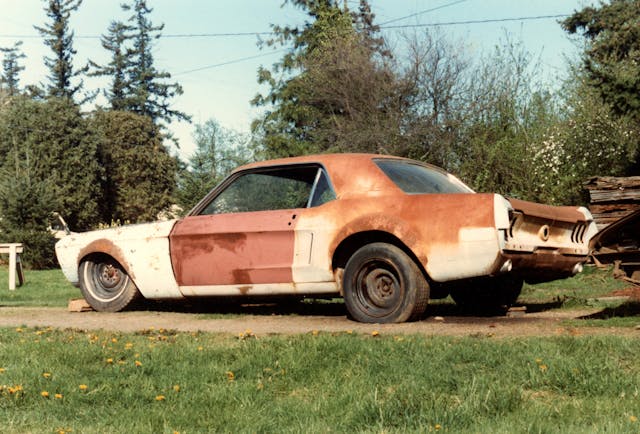
Paint and paint supplies can cost over 100 percent more than they did in 2015. Chrome costs have always been a concern in a restoration, and even finding a qualified chrome shop can be difficult. In my appraisal business, I recently saw brightwork (chrome and stainless) invoices for a single 1950s American car that exceeded $63,000. Want to get an estimate for chrome on a 1930’s Packard or Duesenberg? Get out the smelling salts because you might faint.
If there is a lesson here, it’s that those who want only the best examples of a given car will continue to drive the high end of the market, while the rest of us who are content with good drivers are finally getting a break.
Remember, folks. It’s not damage, it’s patina. It’s not “used up,” it’s just “pre-loved.” As restorations become more expensive, there’s going to be more room for those who aren’t afraid to lap up the asphalt, hang out with friends, and have actual fun with our rides.
***
Check out the Hagerty Media homepage so you don’t miss a single story, or better yet, bookmark it. To get our best stories delivered right to your inbox, subscribe to our newsletters.
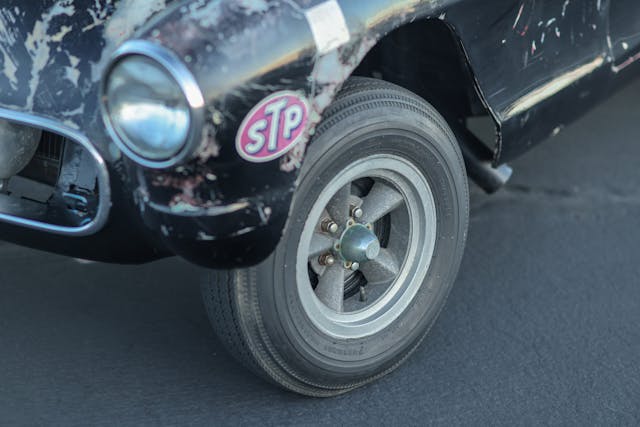


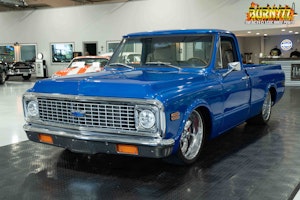
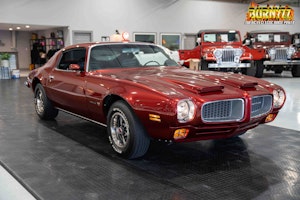


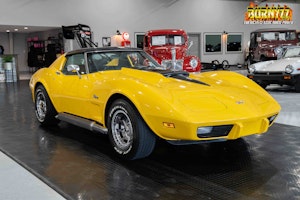







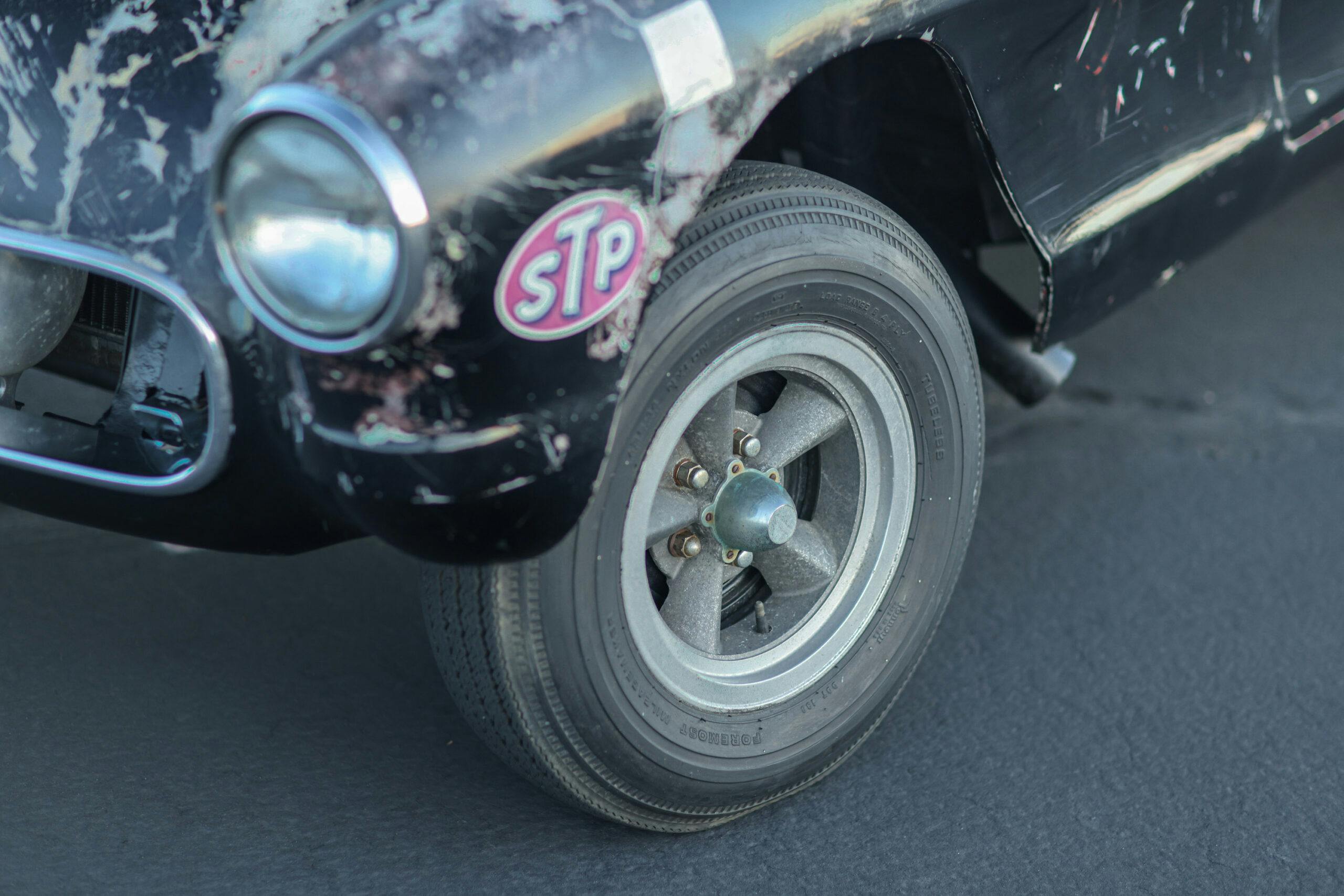
Look there is no mystery here. The cost of restorations today are very expensive. Just paint alone can set you back a lot.
You can buy the car that needs work and end up spending 2x what the better car sold for and lose if you ever sell it.
I have always suggested to buy the best car you can buy and that way in the long run often you will have the best price and better deal on a car often that is still original.
Case in point you can buy a low mile 25K mile C5 convertible for $24K. Of you can save money and buy a well used higher mile car and only spend $17K. If it needs a roof $1500 If it needs full Paint it could be $15K or more. Seats need redone. $3000, Clutch $3000. It can go on and on.
Paint and parts are no longer cheap and even if you do most of the work it still adds up and you still have an old car that is fixed up.
Restorations are for people wanting to fix the car they had in school or the 442 Dad had new etc. You need to have some sentiment to bring the value to restore these right.
On restored car let someone else take the hit and pay a bit more for a good car and fix the little things that are cheap and easy.
Agree, to a point. Yes, buy the car with few needs in cosmetic condition you are happy with (no “cheap” projects). But there’s no sense in buying the “best” #1 condition car fresh off restoration if you want to actually drive it and turn it into a #3 car over a decade.
97 I have seen cars that need restored that would cost you $80K to restore to #1 condition. Then I have seen cars people who have restored them to #1 and struggle to sell them for $40K. The point is you can often buy a much better car for less than you can restore one. Some were restore a few years back at a lower cost. Others were restored for the full on price and people end up taking a loss as they ended up putting more in it than they thought they would.
Either way the best thing to do anymore is spend a little more and get the best you can afford as you will fix it up at a lower cost unless you can do most of all of it yourself or the car already is in good condition.
Agreed. Costs to even mildly restore is just out of control. In too many instances, I’ve looked at classic cars for sale where you’d be upside down in them even if they were given to you for free.
As a certified car nut and a retired financial executive, I can assure you that there are much better ways to invest your money than in vintage cars, if investment is your objective. And never buy a car that needs paint! Every paintjob I’ve ever paid for was nearly as expensive as the car was to acquire. The only “good investment” I’ve ever made in a collectable vehicle was my ’95 Bronco XLT. Bought it in spotless condition inside and out for $5K in 2016 and I’ve been offered $15K for it. Just dumb luck.
Those with large enough wallets see the value in a better looking car than those of us who would take a #2 or #3 and be easily just as happy. Everything be equal most would want the best condition.
True ,however…The a bit beat up raced with dual quads and.. vs the really nice vette are really a somewhat romantic contradiction here. The former has aged just right with a ‘I’d leave it pretty much as it is ‘ vibe. I love it but that’s not what you’re going to find in the real world. Instead it’ll be- the passenger side window doesn’t crank , the wipers work sometimes others not, lots of small stuff and could probably could use a valve job too. That is from a somewhat honest seller. It’s like the end of the movie ‘Castaway ‘. The head turning redhead stops with her dog and the welder in the back of an old original F-100. It’s a great romantic image. But more than likely a 2018 or so ( with working A.C., especially in Texas ) is closer to the truth. Never mind the redhead. People who fall in love with fixer uppers and think ‘I can’ often haven’t tried to doing it.
I bought a ’69 Vette 427/390hp L-36 with an M21 4speed and 3.36 gears in 2004. The car was numbers matching and had only 69K on the clock. Everything worked. It was a 20 footer regarding the paint. The Le Mans Blue lacquer had spiderwebbed over the front fender bulges, the rear deck and the T-tops. I bought the car for $20K. Took it to a few shows with a for sale sign and people were offering $30K for it. I decided to get it repainted by a very good friend. He stripped it down to bare fiberglass, straightened up the rippling that fiber glass always seems to acquire, made sure all the gaps were perfect and shot it in the same Le Mans Blue two stage. That was $8,500. The car was gorgeous and won first place awards wherever it was shown for five years including a best paint trophy at a huge Vette show. I decided to take it to auction in Monterey in 2011. Figured it would bring maybe $35K. It hammered at $30K, which is what people had offered before the repaint. And owning it had been kind of boring. I couldn’t do any fun stuff to it without screwing up its originality.
I think #2 is far more of a factor. You have always been smarter to buy the best car you can afford unless you know you can do the work to the appropriate quality yourself.
2020+ material costs inflated dramatically. Service costs as well. Restoration work was already a premium-pay marketplace to be a customer in.
Many cars get restored that don’t “deserve it” as far as the investment market is concerned. Nostalgia and family heirlooms is something only the individual can set their value on having/doing.
The cost to restore a 1975 LTD 4-door or a 55 T-bird don’t vary in a lot of areas. Considering reproduction parts are far more likely for the T-bird it is possibly even costlier to do the LTD. These 2 cars have totally different investment ceilings.
If you love 75 LTDs… buying the restored one someone took a 100k loss on is worth paying the top-condition price (or you are justified in buying the low-mileage original at a premium). Paying more up front to save lots of money and time on fixing it isn’t really greed or impatience it is actually cold logic.
I however, continue to amass rusty junk piles that make the “bad Mustang” in the photo look like a great start. So much for cold logic…
There are a number of different kind of collectors out there, which is probably a factor in the equation. Those collecting for investment or for the car show arena are always going to look for the best of the best and are likely not to use the cars much. The segment of the market that fully intends to drive and use the car are a lot more likely to settle for condition issues, and are a lot less likely to pay more than what they would pay for new car to get a toy car.
This can be seen in some of the above examples. There aren’t too many people out there who are going to consider a Ferrari Dino a driver, so the price divisions among the quality levels are going to mostly be driven by the keepers. Take something like a 928 or Mustang, and that #4 is right in the crosshairs of the driver-oriented collector.
Well we all know there are different collectors. But we are talking about the majority here and most want a clean decent looking safe and reliable car to drive. Most want to avoid the money pit.
Look in the 80’s we got GTO’s and 442’s for $2000 in decent condition and most needed some minor work and paint. It was cheap to do that and for less than $10K you could have a decent car. Also back then kids could do most of the work on these cars as they were simple and easy to work on at home.
Yes we have some people pushing the Patina deal but many of them are folks that can’t afford to do a resto so they try to make the best of what they can afford. Nothing wrong with that but that is not the majority,
Finally many of the newer cars are either impossible to find parts for as no reproductions and not wortht he cost to make the parts for them due to their value. Technology and plastics are the bane of new restorations.
Cars in some cases are so complex with electronics that you can not fix them easily or cheap. In some cases just finding someone to fix them is a challenge.
Many have plastic bits that are trim or even functioning parts like doors in the AC system and they can be impossible to replace as in no parts.
There are just so many challenges today in so many cars the collector market is being affected in a number of ways. It is just not like it used to be.
Also we have a larger group of people that are wanting things like a street rod and can’t build one. So others are building them for the big auctions and sell one or two a year and add much to their income. I have a number of customers doing this and can clear money and they only want the best.
There are many factors that influence prices as you have detailed, but I also think that it’s just easier to find these high quality cars. There was a time when they were like hen’s teeth and you had to be in the know to find them, but with the internet, these cars are exposed and people in general can quickly find them and educate themselves concerning their value. Forums also help here.
I can put up with imperfect paint, worn carpet and seats, polished touch points, curbed rims, and many other cosmetic issues. For me driveline and suspension need to be in a condition where they are ready to only need regular service for at least 20,000 miles or I’m going to walk away rather than haggle over brake job or tuneup money. I would likely overlook it needs an oil change in anything over 500 miles.
That said, I enjoy the driving experience, not the put it on display experience, rough paint and body makes enjoying the ride to and from work a lot easier when parking, same with the grocery store, in fact a serviceable classic can make any mundane task a lot more fun. That perfect car would be annoying to me.
Getting a car into good mechanical shape so that it’s a reliable and enjoyable driver seems a better investment than achieving that last 5% of perfection in cosmetics, at least to me. Our budgets vary, I’m sure, but nearly all of us have finite money to spend on our cars, and it seems to me that concentrating on function as opposed to appearance makes a car more usable and enjoyable. Not to mention that a perfectly restored car is more likely to just go off and on the trailer at display events. Because if you actually drive it, you begin to lessen its value immediately.
Dave Kinney. After reading this informative article, I have a question and possibly a topic for a future article How much can or does being a pilot car (or last off the line) add to a vehicle? I have a first one built 1970 440-6bbl Challenger. SN 00019 meaning the 19th overall Mopar and the first 440-6bbl Challenger produced on Aug 1 1969. Obviously as your article states condition, miles, and I might add matching numbers in this and some cases make the most difference, which is a calculable number. But I would thing the first/last would add something. Just curious how something like that is taken into account. Enjoy your articles 20+ year satisfied Hagerty customer Thanks much. Wes
Having worked in the plating industry some time ago, I can attest to the statements about chroming. The EPA and local and state regs (Many of which are justified) have all but eliminated American platers. The cost to legally dispose of used chemicals is horrendous. Unbelievably, it used to be legal to flush them down the sewer if diluted sufficiently, they we had to start having them trucked away and pretty much closed our doors as the auto companies refused to pay and went to Mexico with lax rules.
OOPS! “they” should be “then”.
Priceless! The environmentalists make it impossible to operate plating businesses in our country so the operations are shifted to another country (same planet I presume) where they don’t have regulations. That’s the “solution”?
In 1998 I bought a ’69 Mustang convertible for $3,500 from a little old lady. The car had 87K on the clock and was bone stock. 302 2V with a C4 automatic and 2.79 8″ open diff. It had been repainted from its original Meadowlark Yellow to Earl Schieb silver, which had faded to light primer in appearance. It had a pitted chrome driver’s side mirror, a faded black interior, Band-Aid white walls and the stock five spoke wheel covers. The 2V Ford carb was hopelessly screwed up and it could barely accelerate. I still have the car. I stopped keeping track of how much I’ve spent on it over 26 years. I returned it to its factory color, added a 4V Road Demon carb on an Edelbrock Performer intake (Ford didn’t offer a 302 4V after ’68), cammed it up with a single profile 351W cam, GT40P heads, Motorsport roller rockers, custom tri-Y headers, swapped in a set of 3.55 gears, spiffed up the exterior by adding BFG Radial T/As, chrome Rallye wheels, Ford racing mirrors and an original luggage rack (all of which would have been available as optional equipment in 1969). The intake and heads are painted Ford Blue to enhance the stock vibe, It has won 32 trophies and awards in the 26 years I’ve owned it. It has 155K on the rebuilt original engine now. My late wife and I actually drove the car from the Bay Area to Birmingham, AL in 2009 for the 45th Anniversary MCA show. My heirs will have to decide its eventual fate since I will never sell it. BTW, it ran a best pass of 14.308 at 99 mph at the local drag strip some years ago. Pretty respectable for a SB Ford.
Ken – Actually it’s quite the other way around. Anybody has contributed/ contributes to environmental causes knows that if a corporation tried to sneak off and set up operations elsewhere that’s more likely to draw even more attention to them and – ALL -their less than friendly environmentally practices. Like putting a target on your back, which is something they wish to avoid. If any US manufacturer tried to just go and set up shop elsewhere for that reason my mailbox would be filled with ‘Call to Action’ letters. Why you can’t trust them. That’s really bad for business for obvious reasons and whomever tried to do it would be skinned alive.